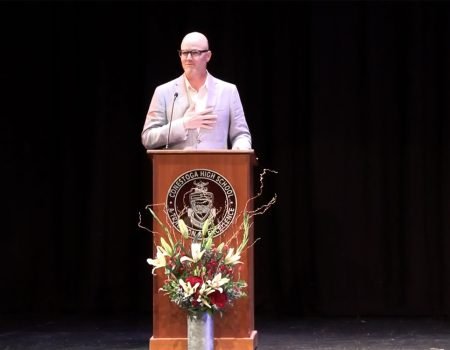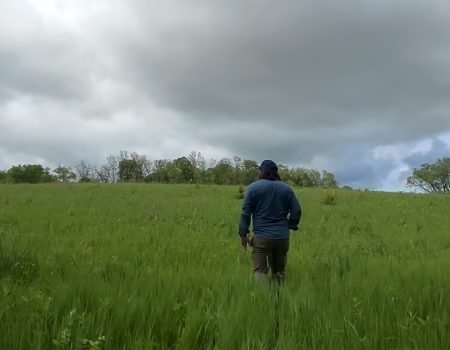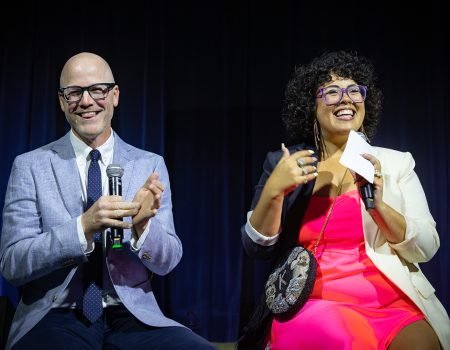Deep Down In Our Hearts
Every performance is unique. Living room concerts, though, are a breed apart.
The concept of a living room concert isn’t new. Organizations like House Concerts and local public radio stations across the country host events all the time. Musicians as far flung as Janis Ian, Nerissa & Katryna Nields, and Smithereen Pat DiNizio make careers of these intimate performances. And it’s not just a washed-up folkie thing: On October 6, Decemberists’ front man, Colin Meloy, will performa living room concert in Portland, Oregon, to benefit the Oregon League of Conservation Voters.
In November, 2003, tired and jaded from ten years of scheduling shows with apathetic, twentysomething bookers, and inspired by conceptual relatedness, I decided to support the release of my sixth album, “Almost Home,” with a living room tour. I played a dozen dates from New York to Chapel Hill, Princeton to Cleveland, and back, in just under two weeks. It was exhausting, but rewarding, and possibly my single-most successful tour in terms of spreading the word, and selling the merch.
What distinguishes living room shows from standard performances, of course, is intimacy. The audience is smaller and closer to the performer. There’s rarely a stage, microphone, amplification or lights. In short, living room performances lack all of the artifice that insulates the performer and the audience from one another. Which is a good thing. There’s a back and forth. We can talk. But it also creates unusual challenges.
For starters, people aren’t used to sitting three feet away from someone singing his heart out. They’re not used to eye contact, or engagement. Typical roles are turned on their heads. The gaze, as postmodernists refer to it, ceases to be one way; it’s returned with enthusiasm. Which, of course, is part of what makes the whole thing special, but also what makes it a bit awkward.
Of course, every performance, whether Mercury Lounge of Madison Square Garden, is subject to chatter. There are always a few people more interested in catching up with one another than participating in the performance itself (begging the question: why did they come to the show in the first place?). In my experience, chatter bugs are usually a) fraternity brothers or b) teenage girls (if not literally, then behaviorally). They’re either uncomfortable with the guy singing about mushy stuff, or they’re so excited to see one another that they’re oblivious to the special circumstance unfolding before them. Of course, they usually amplify their conversation during the quiet parts. Which, with my music — especially when I’m unplugged — is most of the time. The good news is that every performer, from Michael Stipe to Michael Penn to Michael Jackson deals with the same phenomena.
Last night’s living room performance featured all of the above. Contributing to the already challenging situation was the fact that I didn’t know either of my hostesses, nor any of their friends. The initial request, though, was impossible to refuse. It was well timed, and well intentioned. I love to perform (duh), and hadn’t since May. More importantly, the show was in support of a first-time marathoner’s Team In Training fundraising. Oh, and the request came from Syracuse alumni.
So there I was, eight o’clock on a Thursday night, knocking on a stranger’s door.
Of course, Denae (the first-time marathoner and fundraiser) and Lesley (her public relations friend) were delightful, as were most of her friends. With the exception of a coupla’ suits hiding in the hallway (literally), everyone was enthusiastic and engaged — especially during my covers of “Leaving On A Jet Plane” and “Brown Eyed Girl.” In fact, a few of them were even singing along with some of my originals (most notably “Harder To Believe” and “Promise”), which is really great, really appreciated, and really challenging (given that I forget my own lyrics all the time).
Lesley asked me to play for two hours, so I prepped two ten-song sets. The set was long, and ebbed and flowed a bit. It became pretty clear to me, though, that two hours of attentive listening to mostly-unknown, mostly-original songs was a bit more than the audience (most audiences, to be fair) could endure. I’d written a set with a story arch, and there were songs I really wanted to play, though. So I skipped my intended set break, stuck to the plan, and dragged the dozen or so late night remainders all the way to the end.
As the final chord of “Heroes” (an amazing song from David+David’s “Boomtown” which was released in 1986 when, by my calculations, most of last night’s audience was five-years-old), I was feeling slightly lukewarm about the whole thing. Maybe I felt like the set rambled on too much. Maybe I felt like I didn’t put on a good enough show. Maybe the suits were bothering me. I dunno.
Just after that final E chord faded, Denae stood and made a sweet little speech. She said she’d recently hit “the wall” with her marathon training, that, with just six weeks to go, she was fatigued, and wasn’t sure she could make the finish line.
“I’m not sure I’m a hero,” Denae said, “But you guys are. And thanks to you here tonight, and all of my friends and my family supporting me, I know I can do it now.”
Sitting there next to her, the 59th Street Bridge (location of the marathon’s seventeenth mile and gateway to Manhattan) just out the window, I swear to God — as hokey as it sounds — I could feel Mister Rogers smiling over my shoulder. At which point nothing else mattered. We’d done a small, good thing. And that was enough.



